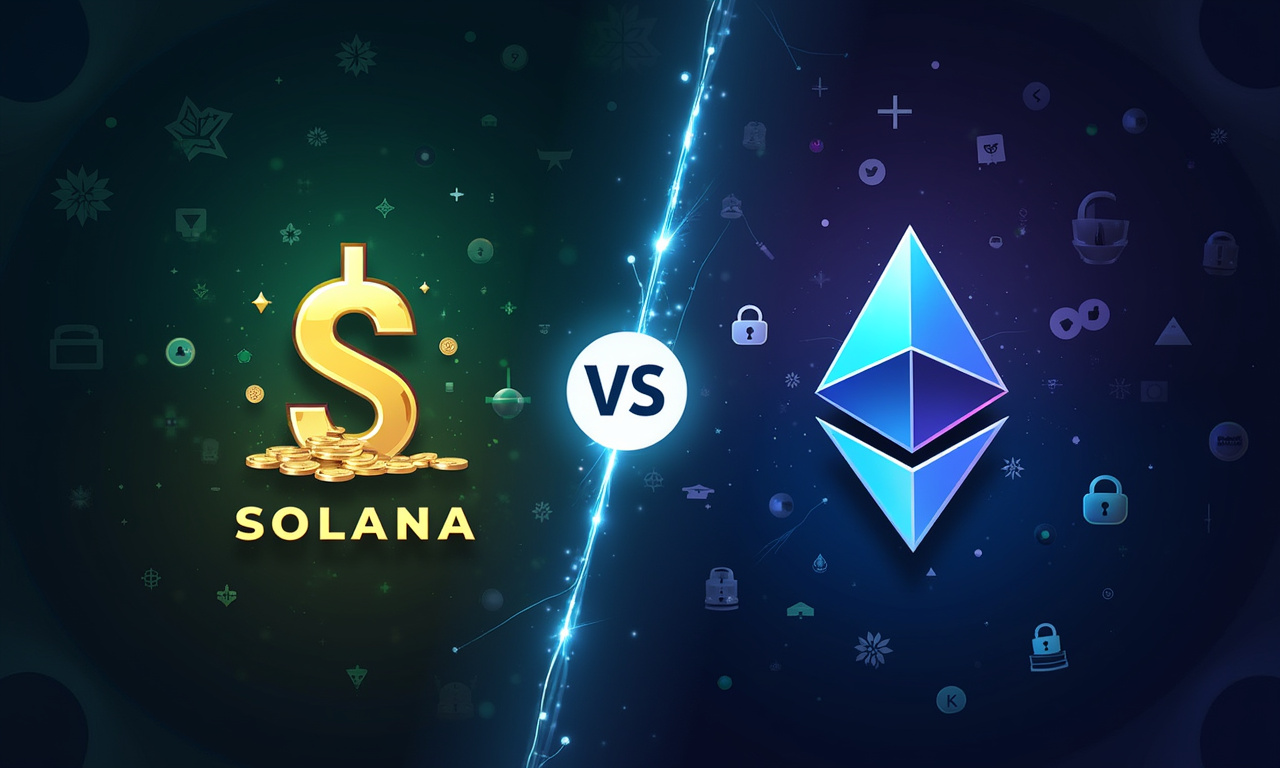
The cryptocurrency space is moving at lightning speed and so are the attacks on its security. Lee Chia Jian is an avid observer of the fast-moving crypto space. He knows that being prepared for the next big threat is essential for anyone dealing with digital assets. Recent statistics paint a concerning picture: 59% of people familiar with crypto lack confidence in its security, and even among crypto owners, 40% harbor doubts about the safety of the technology. High-profile hacks, such as the $200 million Bitmart breach in 2021 and the more recent $35 million Crypto.com hack, underscore the urgent need for robust security measures. KnowingCoin.com understands this need inside and out. Created by gamers, for gamers. That’s why ChainSafe is committed to delivering the tools you need to take ownership of your chain and game the system.
Lee knows the future of crypto security will require a more multi-faceted approach. Receiving a payment is not enough. Having a wallet is only the starting point. You need the right wallet and the know-how to use it safely. We’ll dive into the evolving state of crypto security in this post. You’ll discover the importance of secure wallets and receive actionable advice on how to choose the best wallet type to meet your needs and risk tolerance. It will explore the advantages and limitations of leading hardware wallet solutions like Ledger, empowering readers to make informed decisions about self-custody.
The Need for Innovative Crypto Security in 2025
Today’s cyber threat environment is insecure by design. Fake sites that impersonate trusted platforms capture users’ wallet seed phrases and cause catastrophic losses. Exchanges are attractive targets, as highlighted by previous hacks. Furthermore, many of the crypto owners are still not convinced of the safety of this technology. This requires new security solutions that secure assets while building trust and confidence in the people who use those assets.
Lee wants to underscore the importance of fundamental security practices. Users need to be strong and unique password creators for their accounts. Users need to ensure that 2FA or MFA is activated and only store their cryptocurrency in reputable wallets. In low connectivity environments, they need to be especially careful when visiting websites and not entering sensitive data online. Digital hygiene, secured networks, and proper vetting of oversharing online can all play a huge part in improving user safety. These measures just aren’t cutting it anymore. The escalation of counter measures such as sophisticated DDoS and other types of attacks renders a one-dimensional protection line obsolete.
Multi-Layer Protection System
A strong crypto security strategy should include an ironclad defense in depth. This includes:
- 2FA (Two-Factor Authentication): Adds an extra layer of security by requiring a second verification method, protecting accounts from unauthorized access.
- Cold Wallets: Offline storage solutions offer ultra-security for long-term holdings, shielding assets from online threats.
- Multi-Signature Authentication: Requires multiple approvals before a transaction can proceed, preventing single points of failure.
- Private and Public Key Encryption: Secures wallets with encryption, safeguarding assets like a bank without vaults.
- Security-first development: Rigorous security measures, including multi-layer encryption and authentication, are essential for any crypto wallet app.
This multi-layered structure provides a belt and suspenders approach to which, in the event one layer fails or is defeated, others are still ready to guard against assets.
Enhancing User Experience with Robust Security
The bottom line is, great security must never be achieved by sacrificing user experience. In reality, a smart and effective security system adds to the user experience, offering peace of mind while making complicated systems easier to navigate. At KnowingCoin.com we get that so we’ve made our tools powerful AND easy to use.
He thinks how the real crypto security winners will be determined is by focusing on concrete threats earlier in the process. This includes stopping wallet drainer bots, stopping enterprise endpoint takeover, and stopping identity theft.
Blocking Wallet Drainer Bots
Wallet drainer bots are automated, malicious programs that drain the wallets of unsuspecting users by stealing their cryptocurrency. These bots usually work through convincing the user to sign a transaction that gives control of their asset to the attack’s account. To combat this threat, security solutions should actively detect and block these bots, providing users with real-time warnings and preventing them from executing malicious transactions.
Preventing Enterprise Endpoint Hijacking
Enterprises that deal in cryptocurrency are especially susceptible to endpoint hijacking, in which attackers take control of employees’ computers or devices. This can further enable attackers to extract sensitive information, like private keys or API credentials, leading to the theft of cryptocurrency. Require strong endpoint security to reduce risk of takeover. Take advantage of tech tools like anti-malware software, intrusion detection systems and perform frequent security audits.
Thwarting Identity Theft
Identity theft, which is the fastest growing crime in the U.S., is exacerbated in the crypto space. This allows attackers to steal personal information from users that might include names, addresses, and social security numbers. Criminals can subsequently use this illicitly obtained information to open fraudulent accounts or access legitimate accounts. Security solutions should implement measures to verify users' identities and prevent identity theft, such as biometric authentication and knowledge-based authentication.
Understanding Security Certifications and Audits
Therefore, when you evaluate crypto security solutions, ensure you focus on their security certifications and audit history. In fact, responsible providers will regularly subject their security measures to exhaustive audits by independent third-party security firms to discover and rectify possible vulnerabilities. Certifications like ISO 27001 and SOC 2 show your commitment to security best practices. Lee advises customers to closely review security certifications and audit reports for any crypto security solution. Only then should they think about trusting it with their assets.
Future Developments and Roadmap
The crypto security landscape is dynamic, and security solutions have to keep pace with the rapidly evolving space to stay one step ahead of emerging threats. Lee emphasizes the importance of choosing providers with a clear roadmap for future development and a commitment to continuous improvement. This roadmap would need to outline going beyond just securing against new threats, making security features more prominent, and creating a better overall user experience.
Exploring Self-Custody in Crypto
While self-custody, or holding your own private keys, provides the greatest level of control over one’s crypto. In many respects, it’s the embodiment of the “own your chain” philosophy we’ve been advocating over at KnowingCoin.com. However, with great power comes great responsibility.
Pros and Cons of Self-Custody
Before you embark on a self-custody journey, it’s important to honestly evaluate your technical ability and risk appetite. Ready to take control of your crypto assets with your private keys? Do you have a custody plan for your seed phrase? If you don’t, then self-custody probably isn’t the best option for you.
- Full Control: You have complete control over your funds, without relying on a third party.
- Enhanced Security: If implemented correctly, self-custody can be more secure than relying on a centralized exchange or custodian.
- Privacy: You can transact without revealing your identity to a third party.
We cannot overstate the importance of centralized exchanges (CEXs) to the crypto ecosystem. They provide a marketplace for users to purchase, sell and exchange cryptocurrencies. However, they come with inherent risks.
- Responsibility: You are solely responsible for securing your private keys. Loss of keys means loss of funds.
- Complexity: Setting up and managing a self-custody wallet can be technically challenging.
- Risk of Error: Mistakes in transaction management can lead to irreversible losses.
When Self-Custody is the Right Choice
CEXs provide a convenient and accessible experience, always be aware of the tradeoffs that come along with it. You're essentially trusting a third party with your funds, which introduces risks that don't exist with self-custody.
- HODLing With Conviction: Those who plan to hold their cryptocurrency for the long term and prioritize security.
- When Security and Sovereignty are Non-Negotiable: Individuals who value complete control over their assets and don't want to rely on third parties.
- For the Crypto-Savvy and Wallet-Wise: Users who are comfortable with the technical aspects of managing their own private keys.
A Quick Reality Check
While both self-custody and centralized exchanges have their respective drawbacks, a third option in crypto custody is presenting a happy medium. This covers decentralized exchanges DEXs, hybrid custody solutions, and custody-as-a-service.
The Role of Centralized Exchanges
DEXs enable users to trade cryptocurrencies directly with one another, without trusting a central authority to hold their assets. This removes the custodial risk present with CEXs.
Pros and Cons of Centralized Exchanges
Hybrid custody solutions take the best of both worlds, self-custody and centralized exchanges. With users in control of their private keys, they can enjoy the security associated with self-custody, combined with the convenience and liquidity of a CEX.
- Convenience: CEXs offer a user-friendly interface and a wide range of features.
- Liquidity: CEXs typically have high liquidity, making it easy to buy and sell cryptocurrencies.
- Accessibility: CEXs make it easy for newcomers to enter the crypto market.
Custody-as-a-service providers enable secure storage and management of private keys, typically done on behalf of an institution or individual. This gives users the ability to outsource the technical pains of self-custody but still hold their assets in a way where they have ultimate control.
- Custodial Risk: You don't control your private keys; the exchange does. This means you're relying on the exchange's security measures.
- Regulatory Risk: CEXs are subject to regulatory scrutiny, which can lead to account freezes or other restrictions.
- Counterparty Risk: The exchange could go bankrupt or be hacked, resulting in the loss of your funds.
When Centralized Exchanges are Beneficial
This nascent middle ground offers users greater options and flexibility in how they want to control their crypto assets. This provides the necessary flexibility for them to customize their custody solution according to their individual needs, requirements and risk appetite.
- For Traders and Flippers: Those who actively trade cryptocurrencies and need access to liquidity and advanced trading features.
- Just Getting Started? No Shame: Newcomers to the crypto market who need a user-friendly platform to learn the ropes.
- Convenience is Key: Users who prioritize convenience over security and are willing to accept the risks associated with custodial solutions.
Don’t Forget the Trade-Offs
The future of crypto security will depend on striking that delicate balance between user control and convenience. While self-custody provides the highest level of control, it may not be suitable for all users. While centralized exchanges provide valuable convenience and accessibility, they pose risks that are built into their design. The new middle ground boosts user choice and flexibility. The new middle ground saves users time and gives them more control. The right answer is always what best meets your needs and your acceptable level of risk.
The Emerging Middle Ground in Crypto Custody
Recognizing the limitations of both self-custody and centralized exchanges, a middle ground is emerging in crypto custody. This includes decentralized exchanges (DEXs), hybrid custody options, and custody-as-a-service.
Decentralized Exchanges (DEXs)
DEXs allow users to trade cryptocurrencies directly with each other, without relying on a central intermediary. This eliminates the custodial risk associated with CEXs.
Hybrid Custody Options
Hybrid custody solutions combine the benefits of self-custody and centralized exchanges. Users retain control of their private keys while still benefiting from the convenience and liquidity of a CEX.
Custody-as-a-Service
Custody-as-a-service providers offer secure storage and management of private keys for institutions and individuals. This allows users to outsource the technical complexities of self-custody while still maintaining control over their assets.
Importance of This Middle Ground
This emerging middle ground provides users with more choices and flexibility in how they manage their cryptocurrency. It allows them to tailor their custody solution to their specific needs and risk tolerance.
Conclusion: Balancing Control and Convenience
The future of crypto security lies in finding the right balance between control and convenience. Self-custody offers the ultimate control, but it's not for everyone. Centralized exchanges offer convenience and accessibility, but they come with inherent risks. The emerging middle ground provides users with more choices and flexibility. Ultimately, the best approach depends on individual needs and risk tolerance.
FAQs about Ecrypto1.com
- Is Ecrypto1.com free? (Answer would go here)
- Does it work with MetaMask? (Answer would go here)
- Is it better than CertiK or Ledger? (Answer would go here)
- Can Ecrypto1.com detect phishing websites before I connect my wallet? (Answer would go here)
- Does Ecrypto1.com support multi-chain assets? (Answer would go here)

Lee Chia Jian
Blockchain Analyst
Lim Wei Jian blends collectivist-progressive values and interventionist economics with a Malaysian Chinese perspective, delivering meticulous, balanced blockchain analysis rooted in both careful planning and adaptive thinking. Passionate about crypto education and regional inclusion, he presents investigative, data-driven insights in a diplomatic tone, always seeking collaborative solutions. He’s an avid chess player and enjoys solving mechanical puzzles.








